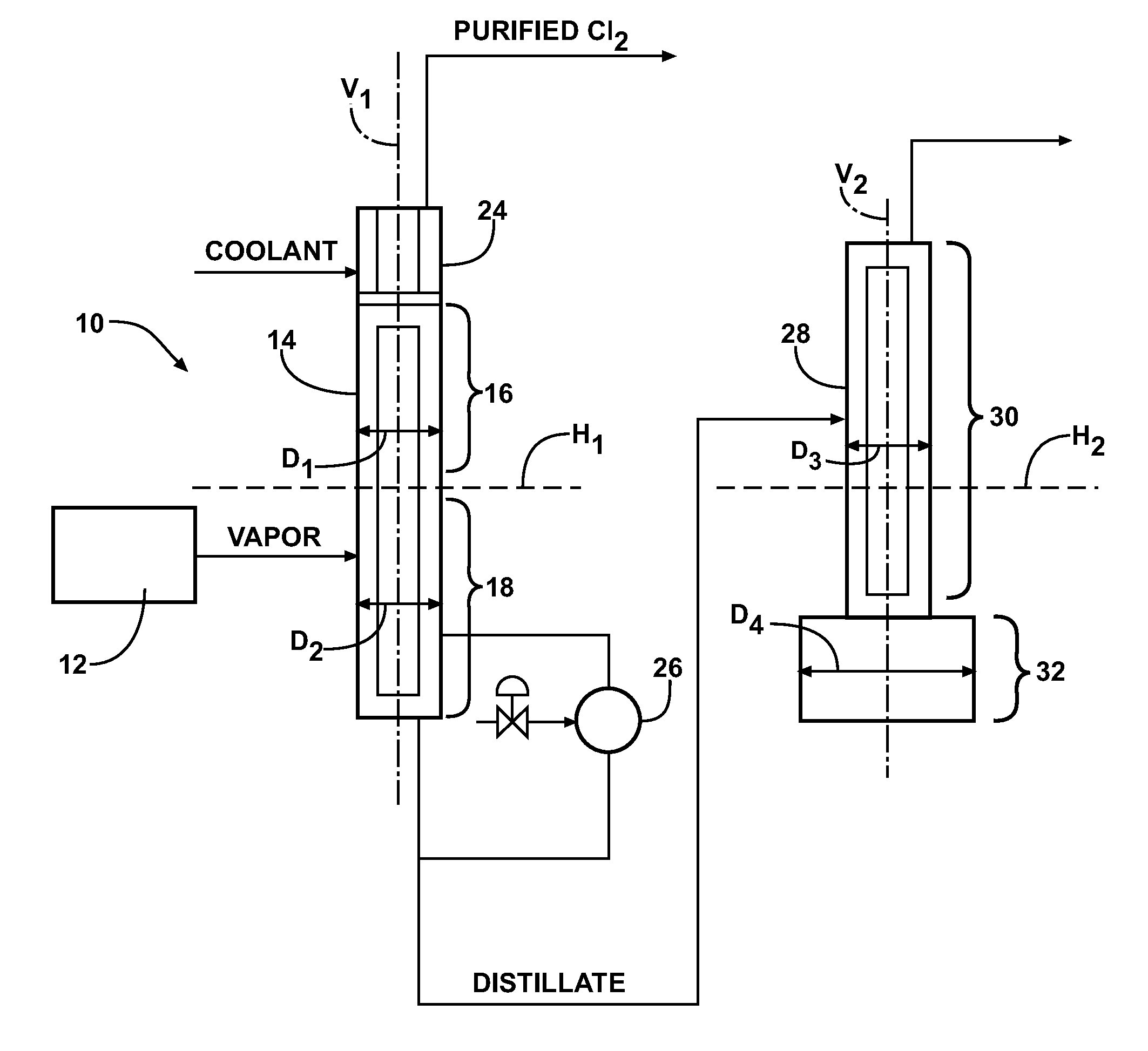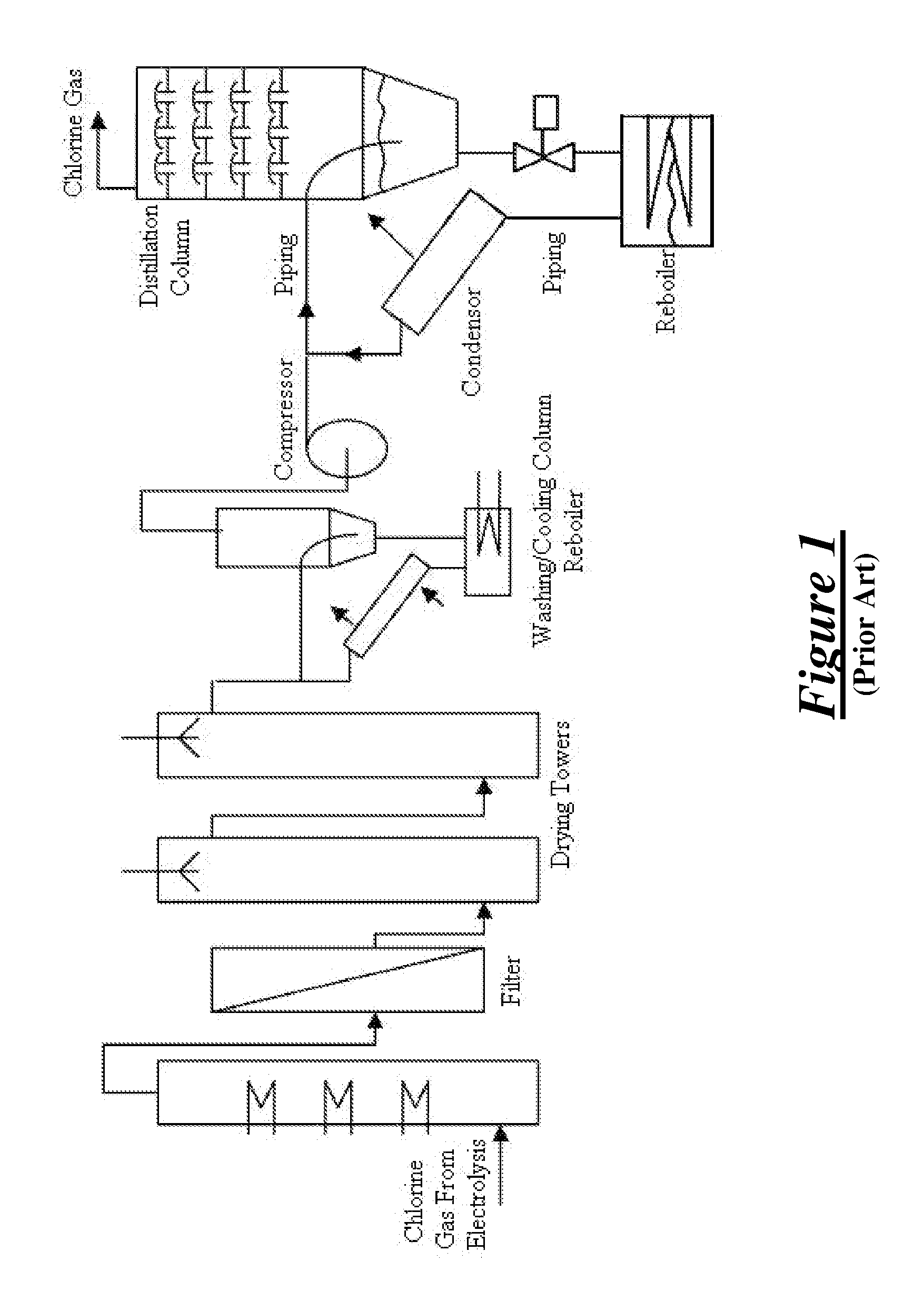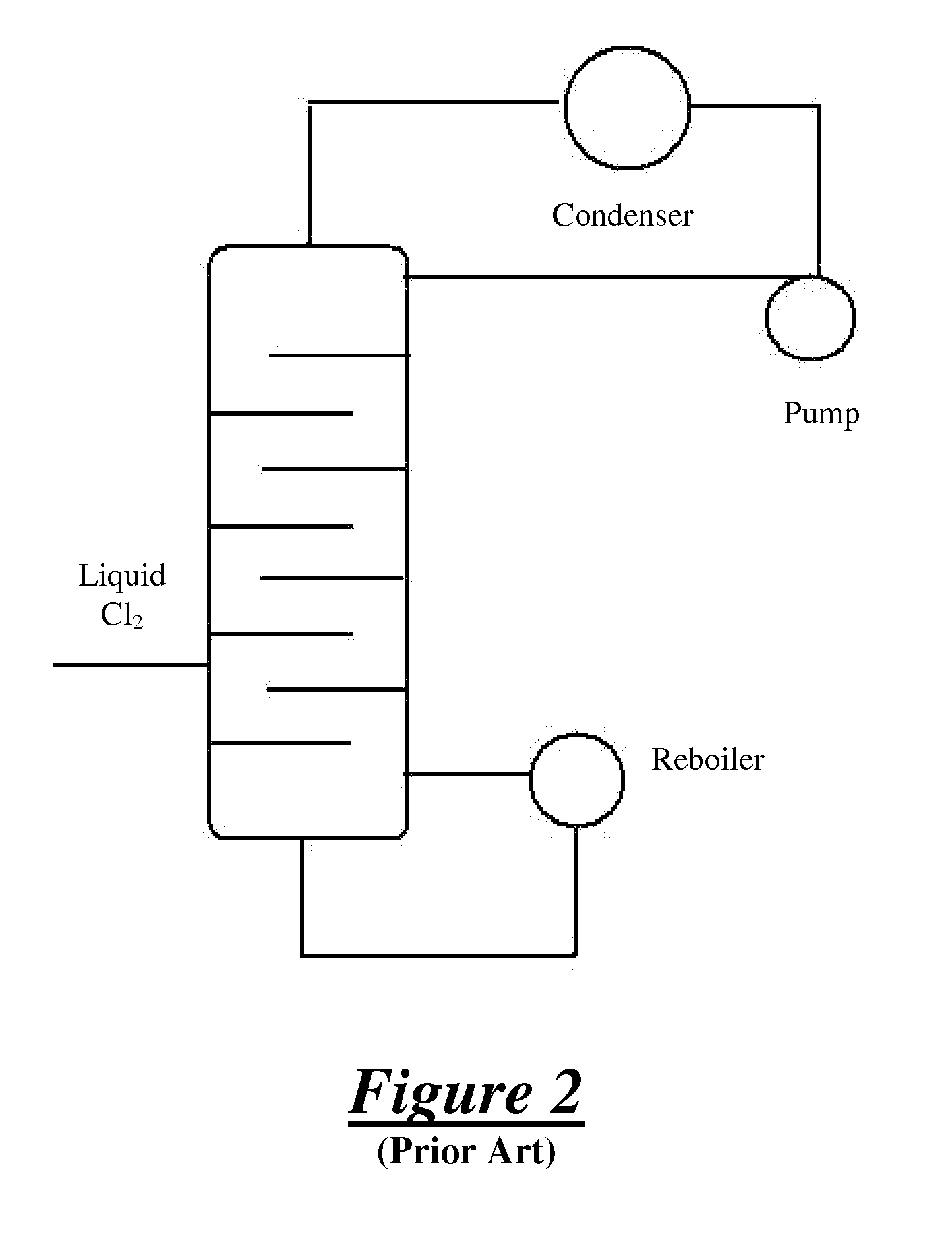Method for purifying a chlorine supply
a chlorine supply and purification technology, applied in the preparation of carboxylic acid halides, isocyanic acid derivative preparations, separation processes, etc., can solve the problems of nitrogen trichloride being sensitive to heat, sulfuric acid used to dry chlorine gas can sodium hydroxide that is typically used to form brine can also be contaminated with ammonia, etc., to achieve the effect of increasing safety, increasing energy efficiency, and increasing cost savings
- Summary
- Abstract
- Description
- Claims
- Application Information
AI Technical Summary
Benefits of technology
Problems solved by technology
Method used
Image
Examples
Embodiment Construction
[0019]The present invention provides a method for purifying a chlorine (Cl2) supply and producing a purified chlorine gas (also known as an “overhead stream” in the art) in a distillation system (10). The purified chlorine gas is formed via distillation / fractionation procedures. The chlorine supply is not particularly limited and is not dependent on any particular method of formation. The chlorine supply may include liquid chlorine (Cl2(I)) or gaseous chlorine (Cl2(g)) such as those types used in commercial or industrial applications. The chlorine supply (also known as a “feed in” in the art) may be a finite supply or a continuous supply and may be provided from continuous or batch chlorine supply processes and / or in discrete units, such as from commercial tanker trunks or locomotive tanks. In one embodiment, the chlorine supply is provided in a semi-batch process. Typically, the chlorine supply is provided as a liquid via a pipeline to one or more storage locations and then purifie...
PUM
| Property | Measurement | Unit |
|---|---|---|
| Temperature | aaaaa | aaaaa |
| Temperature | aaaaa | aaaaa |
| Percent by mass | aaaaa | aaaaa |
Abstract
Description
Claims
Application Information
 Login to View More
Login to View More - R&D
- Intellectual Property
- Life Sciences
- Materials
- Tech Scout
- Unparalleled Data Quality
- Higher Quality Content
- 60% Fewer Hallucinations
Browse by: Latest US Patents, China's latest patents, Technical Efficacy Thesaurus, Application Domain, Technology Topic, Popular Technical Reports.
© 2025 PatSnap. All rights reserved.Legal|Privacy policy|Modern Slavery Act Transparency Statement|Sitemap|About US| Contact US: help@patsnap.com



